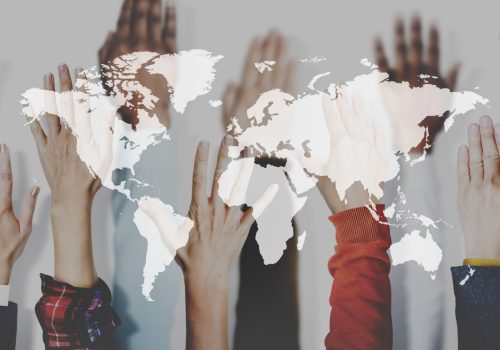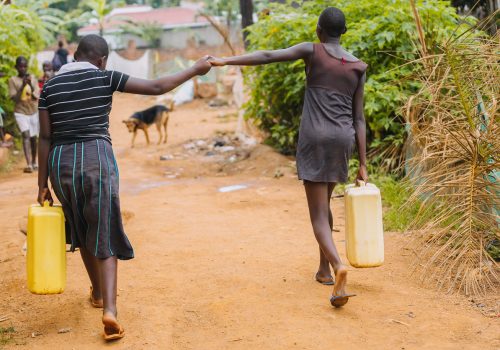“Inequality starts at the top”: Voting reforms in Bretton Woods Institutions
The World Bank Group (WBG) and International Monetary Fund (IMF) are the most relevant norm-setters, knowledge-producers, and conveners in the international development and finance landscape. However, these Bretton Woods Institutions (BWIs) are facing criticism regarding the way they govern and operate. Chief among these criticisms is members’ unequal voice and representation in the leadership and decision-making structure in institutions which still resemble the global economy and power dynamics of 1945, when the institutions were established.
Civil society and world leaders have long called for the WBG and IMF to implement meaningful reforms reflecting today’s global political economy structure. However, reforms in BWIs have been small in scale and slow in pace. This has led to the increasing dissatisfaction of some member countries —namely China— with the leadership and voting structure in the BWIs. Particularly, the overarching influence of the United States —and by extension the U.S. Congress— through its institutional veto power is a frequent source of tension in the BWIs’ reform agenda.
After the United States stalled the approval of 14th General Review of Quota of 2010 for over five years, calls for governance restructuring of BWIs grew louder. Dissatisfied with the pace of democratic reforms at BWIs and other international organizations, UN Secretary-General António Guterres joined the ranks criticizing undemocratic multilateralism. Speaking at the Nelson Mandela Foundation on July 18, 2020, the Secretary-General called for reform in voting rights in United Nation Security Council and the Bretton Woods system as a necessary step to address broader inequality in the world:
Africa has been a double victim. First, as a target of the colonial project. Second, African countries are under-represented in the international institutions that were created after the Second World War, before most of them had won independence. The nations that came out on top more than seven decades ago have refused to contemplate the reforms needed to change power relations in international institutions. The composition and voting rights in the United Nations Security Council and the boards of the Bretton Woods system are a case in point. Inequality starts at the top: in global institutions. Addressing inequality must start by reforming them.
However, the full democratization of BWIs is not realistic —at least in the near future. A more pragmatic approach would work towards a “double majority” system. A double majority is a voting mechanism which requires a majority of votes according to two separate criteria. In the case of the WBG and IMF, one criterion would be a shareholder majority. The shareholder majority is based on the 2008 revised quota formula, which broadly reflects a member’s relative standing in the world economy in a transparent manner.
There are two options for the second criterion: a member-state majority based on a one-country-one-vote system, or a majority of the population of voting members. The double majority decision-making structure in the Council of the European Union introduced by the Treaty of Lisbon successfully models such a voting mechanism in a multilateral setting. Moreover, a majority could be defined as simply larger than 50% of the votes for both criteria in all decisions or a more complex arrangement. This would provide the global South with an opportunity to express its opinion in the decision-making process of BWIs and to block programs and policies that oppose their interests.
While the one-state-one-vote or population majority would be simple to introduce into a double majority voting system, careful deliberations are needed around the quota criterion in this system. For one, the quotas should be capped at a level —in accordance with the definition of majority— that would remove any one member’s potential veto power. Moreover, the cap should be designed in a way that would require at least N countries —N needs to be determined— for a proposal to be rejected. Finally, the quota increases must be reviewed and updated more frequently, as often as every two years. Members should also have the option to increase their capital subscriptions, so long as their voting power reflects the quota formula and is not more than the cap amount. This will allow members to gradually increase their voting shares in BWIs in accordance with the quota formula if they wish to do so. This way, the quota structure would become more transparent, predictable, and dynamic, and more accurately reflective the realities of the global economy.
Ultimately, the “devil is in the details.” Which factors should be reflected in the quota formula, and what should be their weights? Can the quota formula change? If yes, based on what criteria? Should the double majority be based on majority in accordance with one-member-one-vote, or a majority of the population of voting members? How is a “majority” defined? What should the cap for quotas be, and what is the minimum number of countries or share of global population needed for a proposal to be rejected? These questions, and many other details, need to get resolved to effectively reform the BWIs.
Amin Mohseni-Cheraghlou is a consultant with the GeoEconomics Center and an assistant professor of Economics at the American University in Washington, DC.

At the intersection of economics, finance, and foreign policy, the GeoEconomics Center is a translation hub with the goal of helping shape a better global economic future.
Related reading
Image: The boardroom table is set for the Annual General Meeting

